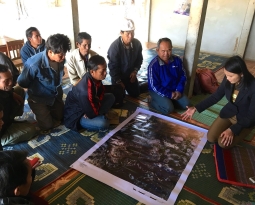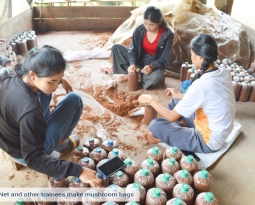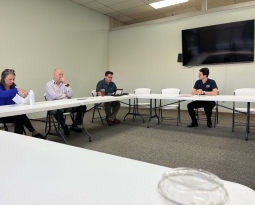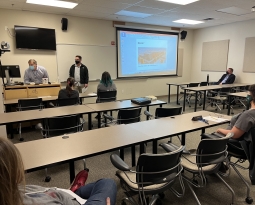Redding Cultural District – Community Vitality Grant
Redding Cultural District Awarded $242,500 Grant from The McConnell Foundation |
| REDDING – Redding Cultural District (RCD), one of 14 communities statewide to be designed by the California Arts Council as a Cultural District, received a $242,500 grant from The McConnell Foundation.
“We’re incredibly excited,” Debra Lucero, executive director of the Shasta County Arts Council – lead agency for RCD, said. “This will enable us a world-class start to marketing our world-class city.”
“The McConnell Foundation is dedicated to assisting in Downtown Redding’s resurgence over the next 10 years,” Rachel Hatch, Program Officer for Community Vitality said. “We believe the Redding Cultural District is an excellent launch for these efforts and we fully support the concept.” Funds from the grant will be used for marketing, publicity, administration and small grants to enable pop-up activity and events throughout the newly designated area. Official Partners for the RCD include: Shasta County Arts Council (lead agency), VIVA Downtown, The City of Redding, Shasta Historical Society, Turtle Bay Exploration Park and The McConnell Foundation. “We are gaining new partners each day,” Lucero said, adding that the Redding Convention & Visitors Bureau has dedicated up to $25,000 for the marketing effort. “We are working with the Redding Chamber of Commerce, the Civic Center, Cascade Theatre, and businesses and organizations throughout the district to create a great visitor experience,” Lucero said. “Imagine going to a rodeo activity, biking or walking our miles of trails or kayaking down the river, taking in a concert or play, eating at one of our downtown restaurants and then strolling across the beautifully lit Sundial Bridge to end your evening. You can’t get that type of diversity in too many places.” The California Arts Council announced the 14 districts in July – the first to serve as California’s inaugural state-designated Cultural Districts. “These Cultural Districts showcase California’s cultural diversity and vibrant experiences,” said Caroline Beteta, president and CEO of Visit California. “The districts are one more way to highlight the one-of-a-kind places throughout our state that inspire residents and visitors alike.” Selection for the California Cultural Districts was conducted through a multistep process, including an open call for initial letters of intent, a peer panel review, site visits for semi-finalists, and an invited finalist application. The program was highly competitive and received interest and submissions from dozens of communities across the state.
Originating with the adoption of Assembly Bill 189 in 2015, authored by Assemblyman Richard Bloom, the California Cultural Districts program aims to leverage the state’s artistic and cultural assets. The 14 districts that comprise the program’s first cohort were selected with variety in mind, intended to help tailor the program to meet the complex needs of a state kaleidoscopic in nature. Districts range developmentally from emerging to established; include an emphasis on cultural consumption, cultural production, and cultural heritage; and are located in urban, suburban and rural areas. Redding Cultural District is considered an emerging, cultural consumption and production rural district. “State-level designation of Cultural Districts, with California’s diverse geography and regional variety, allowed for an entirely new and comprehensive look at our deeply valued cultural assets,” said Donn K. Harris, California Arts Council Chair. “Each community’s personal and generational commitment to these assets speaks of a state deeply invested in the places and people that celebrate local traditions and creativity. Our goal with the pilot launch of this new program was to support a group of districts that met high but broad standards of coherence, vision, and purpose – ones that could set an example for districts that will follow as the program develops and grows.” Additional new districts will be eligible to apply for state designation in 2019 through a finalized certification process. |

 A California Cultural District, as outlined by the program, is a well-defined geographic area with a high concentration of cultural resources and activities. Each of the 14 districts received the designation for a period of five years, per state legislation. Designation, under this pilot launch of the program, includes benefits such as technical assistance, peer-to-peer exchanges, and branding materials and promotional strategy. The Council has partnered with Visit California and Caltrans for strategic statewide marketing and resource support.
A California Cultural District, as outlined by the program, is a well-defined geographic area with a high concentration of cultural resources and activities. Each of the 14 districts received the designation for a period of five years, per state legislation. Designation, under this pilot launch of the program, includes benefits such as technical assistance, peer-to-peer exchanges, and branding materials and promotional strategy. The Council has partnered with Visit California and Caltrans for strategic statewide marketing and resource support. Other districts include:
Other districts include:



